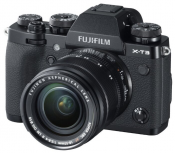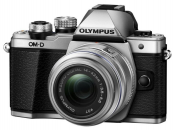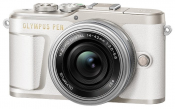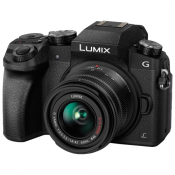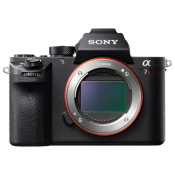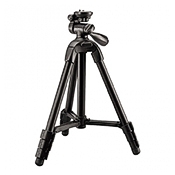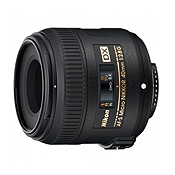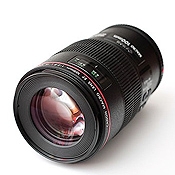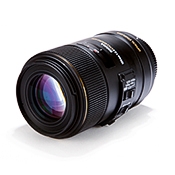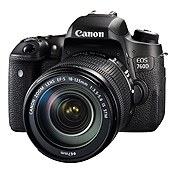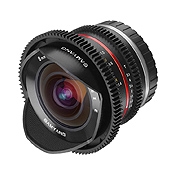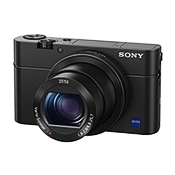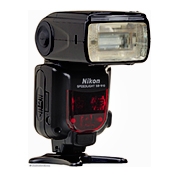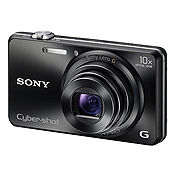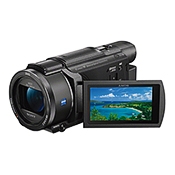Olympus OM-D E-M1 Mark II Kit 12-40
Short review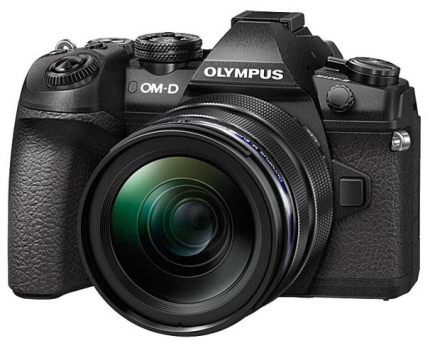
Selected in the rating
6
Best rating
mirrorless cameras
Availability of Wi-Fi - With interchangeable optics - Video shooting: 4K
Buy Olympus OM-D E-M1 Mark II Kit 12-40
Olympus OM-D E-M1 Mark II Kit 12-40 Specifications
Yandex.Market data
| Camera | |
| Camera type | mirrorless with interchangeable optics |
| Lens | |
| Interchangeable lens support | Micro 4/3 bayonet mount |
| Lens included | there is |
| Matrix | |
| Total Pixels | 21.8 M |
| Effective Pixels | 20.4 M |
| The size | 4/3 (Four Thirds) (17.3 x 13.0 mm) |
| Crop factor | 2 |
| Maximum resolution | 5184 x 3888 |
| Matrix type | Live MOS |
| Color depth | 36 bit |
| Sensitivity | 64 - 3200 ISO, Auto ISO |
| Extended ISO values | ISO100, ISO6400, ISO12800, ISO25600 |
| Matrix cleaning function | there is |
| Functionality | |
| White balance | automatic, manual, from the list, bracketing |
| Flash | red-eye reduction, shoe |
| Image Stabilizer (Still Image) | optical, matrix shift |
| Shooting modes | |
| Shooting speed | 15.3 fps |
| Maximum burst of shots | 117 for JPEG, 84 for RAW |
| Timer | there is |
| Timer running time | 2, 10 s |
| Aspect ratio (still image) | 4:3 |
| Viewfinder and LCD | |
| Viewfinder | electronic |
| Using the screen as a viewfinder | there is |
| Viewfinder Pixels | 2360000 |
| LCD screen | 1,037,000 dots, 3 inches |
| LCD screen type | swivel, touch |
| Exposition | |
| Manual setting of shutter speed and aperture | there is |
| Automatic exposure processing | shutter priority, aperture priority |
| Exposure compensation | +/- 5 EV in 1/3-stop increments |
| Exposure metering | multi-zone, center-weighted, general (Evaluative), point |
| Exposure Bracketing | there is |
| Focusing | |
| Autofocus type | hybrid |
| Focus points | 121 |
| AF illuminator | there is |
| Manual focus | there is |
| Electronic rangefinder | there is |
| Face Focus | there is |
| Memory and interfaces | |
| Memory card type | SD, SDHC, SDXC |
| Image formats | JPEG, RAW |
| RAW + JPEG recording mode | there is |
| Interfaces | USB 3.0, HDMI, mic-in, audio, Wi-Fi |
| Food | |
| Battery format | your own |
| Number of batteries | 1 |
| Battery capacity | 440 photos |
| Power connector | there is |
| Video and sound recording | |
| Video recording | there is |
| Video recording format | AVI, MOV |
| Video codecs | MPEG4, MJPEG |
| Maximum video resolution | 4096x2160 |
| Maximum video frame rate | 60 frames / s |
| Maximum frame rate when shooting HD video | 50/60 fps @ 1280x720, 50/60 fps @ 1920x1080, 24 fps @ 4096x2160 |
| Electronic stabilization when filming | there is |
| Sound recording | there is |
| Other functions and features | |
| Body material | metal |
| Protection | from moisture, from dust, from low temperatures |
| Additional features | tripod mount, remote control, orientation sensor, HDR shooting |
| Dimensions and weight | |
| The size | 134x91x69 mm, without lens |
| Weight | 498 g, without batteries; 574 g, with batteries, without lens |
Opinions from the Olympus OM-D E-M1 Mark II Kit 12-40
Yandex.Market data
Advantages:
- A completely different shooting experience! At night and at dusk, you can easily shoot handheld with a shutter speed of 1 second - 99% of the frames are absolutely sharp. This allows you to use the lowest ISO, hold down the aperture without fiddling with the tripod. It is not only convenient, but also saves a lot of time. Focus points throughout the frame, excellent autofocus, huge buffer, rate of fire. The number of rejects is minimal. In portraits, eye focus is always perfect. Exposition too. It's a pleasure to work. - The image is very high quality by any measure. Yes, it loses a little to full-frame, but this difference is so tiny that no one will ever see it. It does not knock out the light in the photographs, the shadows stretch very well, there is almost no noise. The color rendition is excellent. The lenses are fantastically sharp with an open frame across the frame. On the spread of A4 magazine, the frames look gorgeous. Large prints one and a half meters on the long side - too.- Grip and ergonomics, the ability to reconfigure almost any button for yourself - Pros common to all mirrorless cameras. 1. Swivel screen. You can shoot from any angle - from the floor, from outstretched arms, from around the corner - all this makes the shooting process very easy. 2. You can see the exposure right away, in difficult lighting conditions you don't need to "shoot". - Micro Four Thirds system format. It is customary to scold her for noise and great depth of field. But it is not all that bad. In terms of noise, the camera loses to the steepest full-frame stop, maximum one and a half. Where Olympus shoots badly, and on FF the picture will be very so-so. A large DOF for me is a plus, more often you can shoot with an open aperture where you would have to cover it on a large sensor. At the same time, blurring the background into a mess is not a problem at all. - Compactness of the system. I was not too lazy and thought that the E-M1 with three 2.8 pro-zooms (from 14 to 420 mm!) Weighs 2.3 kilograms. You can carry with you in your bag at least all day. Sony A7 with similar lenses will weigh 3.5 kilograms - and this is already heavy. Good DSLRs - 5 kg or more - goodbye.
Disadvantages:
- In control, the most annoying thing is when, for example, you need to quickly change the aperture from 2.8 to 8 - you quickly turn the wheel, but not all clicks are "counted" by the camera, but only half. - Autofocus sometimes gets very annoyingly smeared if the focus point is near a bright glare. - Artifacts when shooting strictly against the light. But they are on any mirrorless camera with phase sensors on the matrix, alas. - The application for a mobile phone (from which you can control the camera and drop frames) is done rather clumsy - While the buffer is being reset, you can shoot, but you cannot switch to another shooting mode. And watch the footage too. - The cover of the memory card compartment is loose. Against the background of the overall quality of workmanship, this is annoying. - The Auto ISO algorithm is implemented quite straightforward, and it is impossible to adjust it normally (so that it takes into account, for example, focal length). - Including: in manual mode, you can turn on Auto ISO, but the exposure compensation for which it will be determined cannot be set. - EVI is large, but the resolution and color rendition are not very good by modern standards. The interface graphics are frankly so-so.
Comment:
- I shoot on E-M1 Mark2 for six months. In general, the camera is absolutely suitable for professional use, it is very convenient to work, and not a single customer will stick to the quality. At the same time, the price and, most importantly, weight are significantly less than analogues. Cases when there is not enough sensitivity or depth of field for me personally are very, very rare, the advantages outweigh. - But, of course, the camera will not suit members of the "jammed aperture" club and those who mistakenly buy a camera instead of a night vision device. - The camera requires a completely different approach to shooting after a full-frame DSLR. If earlier I had A as the most popular mode, now (due to the stabilizer and the fact that in 90% of cases the diaphragm does not need to be covered) S very often helps out. Especially at night - if there is no movement in the frame, then you set the shutter speed for at least a second and shoot at the minimum sensitivity, if any, you choose according to the nature of the movement. - Curiously enough, almost all of the tricks that Olympus praises in their advertising - shooting 80-megapixel images, Live Composite, Pro Capture, etc. - I don't use it at all.
October 28, 2018, Moscow
Advantages:
Ergonomics at height: very comfortable grip, perfect balance with 12-40 / 2.8 and 25 / 1.2, even without the batblock. Monolithic construction, dust and moisture protection. Nice to hold, nice to use. It looks and feels like a professional tool. Instant response to any action: turning on, focusing, viewing images, working with menus, etc. A tenacious battery. This is especially noticeable when compared to Sony's A7R2 type mirrorless cameras. Automatic focusing on the face and even on the eye closest to the camera.Dramatically increases the number of good shots, even when shooting "offhand". A rotatable detachable screen for convenient selfies. Helpful. Programmable auto-ISO. Also increases the percentage of qualified personnel. Stunning detail, especially in RAW. Apparently, this is due to the combination of a 20MP sensor without an anti-aliasing filter, a cool stabilization system and a large depth of field of a sensor with a crop factor 2. The "correct" color. In most cases, the auto-BB works very well. If not, the color can be easily corrected by setting the temperature or by "pipette" over the gray area or over the skin. And everything, all the other colors fall into place. Unfortunately, not all cameras can do this. Acceptable noise levels and, importantly, maintaining correct color at high ISOs. In RAW, you can shoot up to ISO 3200-4000. Very nice quiet and "light" shutter. At first it was unusual to press too lightly. Now I'm used to it and I think it's a super-trick for shooting in temples, for shooting small children and in general. The stabilizer makes absolutely no sounds during operation, unlike, say, E-M5, PEN-F. Two SD card slots. I somehow lost half of my vacation photos, now I appreciate such a backup. USB-C connector. It is convenient and quick to transfer pictures to new poppies and generally new laptops with this connector. The advantage is not the carcass, but the m4 / 3 system: excellent optics from Olympus + Panasonic, especially PRO lenses. 12-40 impressed with quality, 25 / 1.2 met expectations and gave the expected "volume" and "bokeh".
Disadvantages:
Compared to full-frame cameras from Sony and Nikon, the color reproduction is not so rich, although 80-90% suits me. The camera loves light. Stab rules, but in general, in the evening, or in winter on a cloudy day, or in an apartment under the light of a light bulb, masterpieces cannot be captured with this camera. Full frame is slightly better in this regard. There is no ISO 100. There is a "software" ISO 64, but it is not automatically enabled (in auto ISO). And ISO 200 makes a little noise, sir. For best results, shoot in RAW only. I myself was a big proponent of JPEG shooting, but the difference in detail and in some shades is striking. It's like a different camera. Unfortunately, RAW from the E-M1mk2 is not supported by the legacy but my favorite Apple Aperture software. Although this is not a drawback of the camera itself. There is a way out - to use Adobe DNG converter (just turn off lossy compression). Fuji X-Pro2, X-T2 were scolded for purple artifacts when shooting in backlight. But in one shot (so far only one) I caught this effect on this camera. The menu can of course be improved. Better yet, completely redo it. The price after the decline (~ 155-160tr per whale) is not a disadvantage, with such a dollar exchange rate and with such prices for competing products, it is quite adequate.
Comment:
I tried a lot of different photographic equipment, all amateur. I own a Sony full-frame mirrorless system, recently tried Fuji X-T2 + a set of fixes. Full frame Sony gives excellent image quality, the best I've seen. But there are also certain drawbacks (you can write a separate review here). Let's just say that most of these shortcomings have been fixed in the Sony A9, but firstly, the price, and secondly, the lack of "price and weight and dimensions of top Sony FE lenses" is still not fixed and will not be fixed. Fuji is good, or rather "cool" ergonomically, and the fixes are excellent. But the color that X-T2 "comes up with" did not come to me. And the main zoom 16-55 / 2.8 is too healthy, even the full-frame Sony / Zeiss 24-70 / 4 is smaller and lighter. So, after reading the reviews of the E-M1mk2, having seen great photos from it and from the PEN-F on a similar sensor, I decided to go back to basics (many, many years ago I had an Olympus E-1 and then an E-P1). The expectations were met, and in some places even exceeded. Perhaps, out of more than a dozen cameras I have tested over 12 years, this Olympus gives the least percentage of technical defects, especially when shooting in RAW. And it weighs only 1kg with the lens. And the optics are gorgeous.
April 6, 2018, Nizhny Novgorod
Advantages:
Operation speed, autofocus, color rendering, ergonomics, workmanship, battery, Hi Res mode
Disadvantages:
not detected
Comment:
With the flagship Olympus, I managed to work for about a month on duty. To be honest, I wanted to buy this camera for permanent work. The camera is very comfortable in the hand (grip like a DSLR). The ergonomics are excellent, everything is at hand. You can quickly change the parameters you want. The camera is very fast, all actions are performed instantly. The focus is tenacious, both static and tracking. The marriage rate is minimal. Hi Res mode allows you to make high-resolution files in excellent quality. True, only from a tripod. The matrix in the camera is the best at the moment. Noise up to ISO 3200 is imperceptible. I liked the color and skin tone very much. The faces are always light and pleasant. An excellent camera for portraits, given the choice of optics. Landscapes lack a little air, volume. And for portraits and reportage, almost the perfect camera. The battery holds 700-800 frames really. Super stabilization, in photos and videos. The video also shoots perfectly, keeps the focus, there is 4k. Taking into account the choice of optics - one of the best prof. cameras for today. I advise you to take a closer look. More details in my video https://youtu.be/hWmIvldu0VM
April 2, 2018, Lukhovitsy
